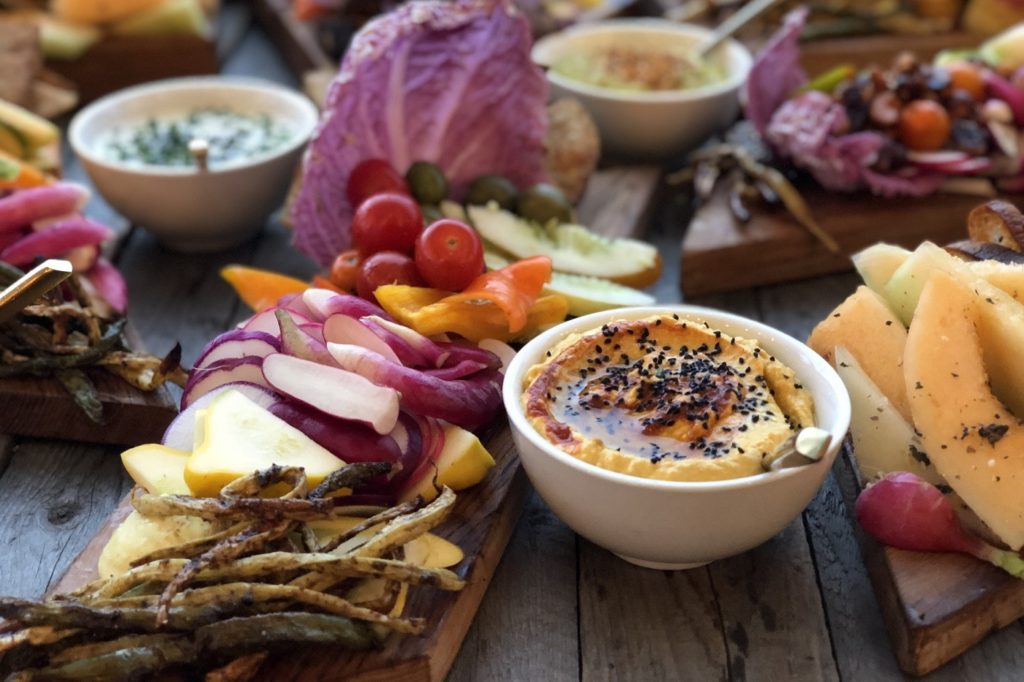At the height of the COVID-19 pandemic, the weaknesses of American food supply chains were exposed. Grocery shelves were bare. Plague threatened to give way to famine, but not because the land stopped producing. Rather, it was because produce could not be delivered to grocery stores. If the grocery store doesn’t have food, then where are we supposed to get it? This became a real question for Americans. Judging by the flour shortages and preponderance of “Quarantine Sourdough” YouTube videos, many started trying to answer that question for themselves.
Meanwhile, I was at the abbey.
Whenever I told people that my immediate post-college graduation plan was to spend a year farming with nuns, I was generally met with a mixture of enthusiasm and incomprehension. I think my interlocutors were equally unsure about the “farming” part and the “with nuns” part. And for good reason—most people, Catholics included, have never encountered a community of cloistered nuns before. Even fewer people seem to have spent any significant time on an operational farm.
I went into my year with the nuns—they call it a monastic internship—with an uncharacteristic lack of clarity for why I was there. The best I could come up with was “I want to make an in-depth study of cows.” While my friends laughed at this statement, the nuns took me seriously.
Start your day with Public Discourse
Sign up and get our daily essays sent straight to your inbox.For the nuns, the monastic day flows back and forth between working on the land and praying in choir. For interns, this translates to four work sessions a day. The first and last of these are spent doing chores and milking at the dairy, and the other two work periods vary according to the needs of the community and the interests of the intern.
I relished my time at the dairy, hand-milking our small herd of heritage breed dairy cows and helping to raise the calves. My twice-weekly work sessions maintaining the dairy pastures provided valuable time for introspection as I pulled up stinging nettles and cut down burdock.
And the closest I’ve probably ever come to prayerful contemplation was while I crafted artisanal cheeses and cared for them through the aging process.
Slaughter, Sacrifice, and the Sacredness of Food
In addition to all my work at the dairy, I also had two periods a week tending to the needs of the beef herd. For the most part this meant cleaning out the barn while the pastures were dormant, and then setting up fences and helping with hay during the summertime. At the end of November, we sent our last animals for the season to slaughter—though the nuns don’t call it that. They call it a sacrifice, because “sacrifice” acknowledges the dignity of the animals. The animals aren’t a commodity to be treated in the most cost-efficient way. They’re creatures whose lives enrich ours just as much as their deaths nourish us. Most of the fated beef herd cows were lured into the livestock trailer with stale bread and carted off. A few weeks later, Mother Augusta would go pick them up in boxes and bring them to the back door for Mother Scholastica to sort and store in the cooler. But Patrick was different.
Animals aren’t a commodity to be treated in the most cost-efficient way. They’re creatures whose lives enrich ours just as much as their deaths nourish us.
The man who wanted to buy Patrick specifically asked for him to be killed on the land. Mother Augusta called Mr. Short, a professional slaughterman and long-time friend of the abbey. On the designated day at the end of November, while it was windy and freezing, Mr. Short walked up to Patrick and shot him in the head. The beautiful orange and white Belted Galloway steer fell to the ground. I knelt beside him and rubbed his still-warm fur. And then Mr. Short went about his business of cutting off the head, hooves, and hide, removing the offal, and quartering what remained. Mr. Short took the quarters to the meat market for further processing. Mother Augusta took the head, hooves, and offal and used the tractor to bury them in the compost pile. After a short break, she and I met back at the tractor shed where she showed me how to scrape the hide in preparation for it to be tanned.
Over the next several days, I spent every spare moment scraping that hide. I didn’t want to talk about it. I really didn’t have too much to say about any of it. I just wanted to be there with it. There was something sacred at play that I couldn’t name and didn’t want to share. I was intolerant when the other interns weren’t sensitive to it and simultaneously incapable of articulating—even to myself—what they were insensitive to. After about a week, the hide was finished. We cured it with salt and sent it off to be tanned. Something had been impressed upon me, but I still didn’t know what it was.
Then, several months later, I began making soup for the community once a week. I found myself unwrapping round shanks and knobby joints from white butcher paper stained brown with blood. The smell brought me back to that November day when my toes were frozen inside my boots and Patrick was slowly dismantled in front of me. I was always squeamish about touching raw meat before, but all of a sudden this meat was familiar. I wanted to touch it with my hands. I laid the tongs aside. With my fingers, I carefully arranged each piece on oiled baking sheets, entirely present to what I was doing. Again, I had the sense of participating in something sacred, but I couldn’t explain it.
If life is sacred, food must be sacred too, since it makes life possible. And the higher the order of life which is given up to be food, the more sacred the food. That’s why vegetables are harvested, while animals are sacrificed.
Now that I’ve had some more time to think about it, I think what happened in these moments was that I became aware for the first time that food is sacred. It is the material cause that sustains our lives. If life is sacred, food must be sacred too, since it makes life possible. And the higher the order of life which is given up to be food, the more sacred the food. That’s why vegetables are harvested, while animals are sacrificed. That’s why the Catholic Church considers the sacrifice of the Mass, when God offers his body as food for our corporal and spiritual nourishment, the source and summit of the Christian life.
Becoming More Human
Through my experience at the abbey, I saw that our participation in cultivating food makes us more human in a way that is just as important as the way a classical liberal arts education makes us more human. At their best, both activities cultivate the soul’s capacity to be receptive to truth and attentive to the other. While a liberal arts education deals more with philosophical truths about human nature, farming grounds a person in the concrete reality of the created things from which those philosophical truths are derived. In school, I learned to attend to the details of a text so that I could apprehend distinctions and judge arguments. On the farm, I learned that if I wanted to properly maintain a fence line, I had to tell the difference between a living and a dead tree—even in the winter, when there are no leaves. This kind of concrete experiential education put me in touch with my body, both by cultivating my capacity for physical labor and by honing my ability to see the things around me. These two kinds of education complement each other just as the complement of mind and body makes up the human person.
Intimacy with the sources of our food is good for us on a human level, but it’s also good for local communities and the nation at large. Successful farming has to be a communal enterprise, because it requires more manpower and expertise than any one person or any one family possesses. When neighbors help neighbors to bring in the hay harvest or fix a broken tractor or teach a new farmer how to slaughter her own chickens, they form the kind of human bonds that can help heal the political rifts tearing our country apart. If America were to decentralize and diversify agriculture, this shift would have far-reaching ramifications for trade, immigration, and, one would hope, the obesity epidemic, with all of its attendant risks.
Our participation in cultivating food makes us more human in a way that is just as important as the way a classical liberal arts education makes us more human. At their best, both activities cultivate the soul’s capacity to be receptive to truth and attentive to the other.
Yet family farms are rapidly becoming obsolete, and the average age of the American farmer continues to rise. It’s well known that agriculture is a fiscally dismal enterprise. The reasons for this are complex and multi-generational, and I am only beginning to understand them. However, my sense is that one of the fundamental issues is that of economies of scale. In order for farming to be sustainable, animals to be treated well, and the environment to be conserved, farming needs to be practiced on a relatively small scale. However, due to a variety of factors, including overregulation, regulatory capture, the interests of agribusiness, and the devaluation of farming by society, it’s nearly impossible to farm on a small scale. There are a few groups like Farm Aid doing good work both to help farmers and shape policy, but the problems seem insurmountable.
Nevertheless, my hope is that the experience of the pandemic has inspired at least a few people to become more involved in the growth and creation of their food, whether by signing up for a CSA, starting their own garden, or baking their own bread. Maybe a few blessed souls have even decided to try farming, despite all the challenges.
Humans are meant to live in contact with the land. When we remove ourselves from the soil, we deaden ourselves to the sources of life.













